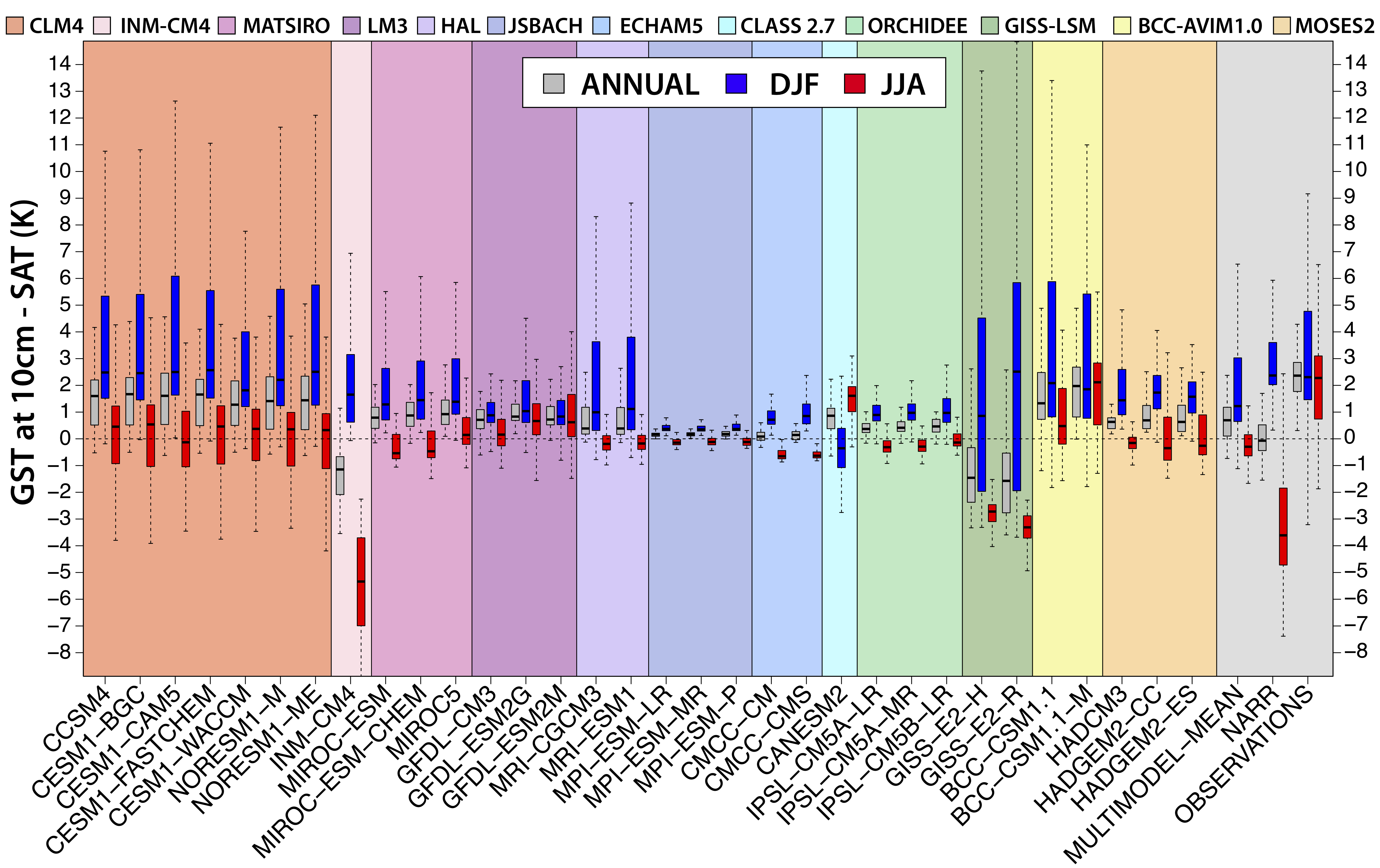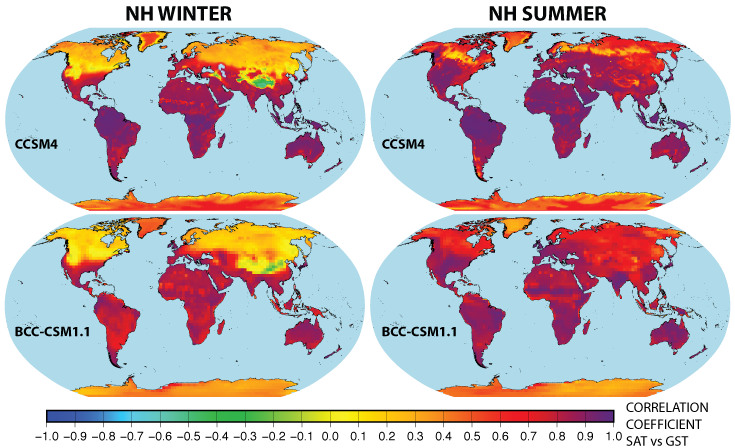Land surface model influence on the simulated climatologies of temperature and precipitation extremes in the WRF v3.9 model over North America.
 The representation and projection of extreme temperature and precipitation events in regional and global climate models are of major importance for the study of climate change impacts. Here, we present a modeling experiment using the Weather Research and Forecasting (WRF) model to determine the influence of the land surface model (LSM) component on uncertainties associated with extreme events. Our results show that the WRF simulation of the climatology of heat extremes can be 5 ∘C warmer and 6 d longer depending on the employed LSM component, and similarly for cold extremes and heavy precipitation events. This study illustrates the importance of the LSM choice in climate simulations, supporting the development of new modeling studies using different LSM components to understand inter-model differences in simulating extreme temperature and precipitation events, which in turn will help to reduce uncertainties in climate model projections.
The representation and projection of extreme temperature and precipitation events in regional and global climate models are of major importance for the study of climate change impacts. Here, we present a modeling experiment using the Weather Research and Forecasting (WRF) model to determine the influence of the land surface model (LSM) component on uncertainties associated with extreme events. Our results show that the WRF simulation of the climatology of heat extremes can be 5 ∘C warmer and 6 d longer depending on the employed LSM component, and similarly for cold extremes and heavy precipitation events. This study illustrates the importance of the LSM choice in climate simulations, supporting the development of new modeling studies using different LSM components to understand inter-model differences in simulating extreme temperature and precipitation events, which in turn will help to reduce uncertainties in climate model projections.
- Reference: García-García, A., Cuesta-Valero, F. J., Beltrami, H., González-Rouco, F., García-Bustamante, E., and Finnis, J.: Land surface model influence on the simulated climatologies of temperature and precipitation extremes in the WRF v3.9 model over North America, Geosci. Model Dev., 13, 5345–5366, https://doi.org/10.5194/gmd-13-5345-2020, 2020.
 The relationships between air and ground surface temperatures across North America are examined in the historical and future projection simulations from 32 general circulation models (GCMs) included in the fifth phase of the Coupled Model Intercomparison Project (CMIP5). Our results show that the representation of air‐ground coupling, analyzed using the difference between ground and air surface temperatures as metric, differs from observations, the North American Regional Reanalysis product and among the CMIP5 GCM simulations, by amounts that depend on the employed land surface model. The large variability among GCMs and the marked dependence of the results on the choice of the land surface model illustrate the need for improving the representation of processes controlling the coupling of the lower atmosphere and the land surface in GCMs.
The relationships between air and ground surface temperatures across North America are examined in the historical and future projection simulations from 32 general circulation models (GCMs) included in the fifth phase of the Coupled Model Intercomparison Project (CMIP5). Our results show that the representation of air‐ground coupling, analyzed using the difference between ground and air surface temperatures as metric, differs from observations, the North American Regional Reanalysis product and among the CMIP5 GCM simulations, by amounts that depend on the employed land surface model. The large variability among GCMs and the marked dependence of the results on the choice of the land surface model illustrate the need for improving the representation of processes controlling the coupling of the lower atmosphere and the land surface in GCMs. We evaluate herein the thermal consequences of these processes as simulated by models in the third phase of the paleoclimate modelling intercomparison project and the fifth phase of the coupled model intercomparison project (PMIP3/CMIP5). We examine air and ground temperature tracking at decadal and centennial time-scales within PMIP3 last-millennium simulations concatenated to historical simulations from the CMIP5 archive. We find a strong coupling between air and ground temperatures during the summer from 850 to 2005 CE. Additionally, we use the simulated ground surface temperatures as an upper boundary condition to drive a one-dimensional conductive model in order to derive synthetic temperature-depth profiles for each PMIP3/CMIP5 simulation. These results demonstrate the robustness of surface temperature reconstructions from terrestrial borehole data and their interpretation as indicators of past surface air temperature trends and continental energy storage.
We evaluate herein the thermal consequences of these processes as simulated by models in the third phase of the paleoclimate modelling intercomparison project and the fifth phase of the coupled model intercomparison project (PMIP3/CMIP5). We examine air and ground temperature tracking at decadal and centennial time-scales within PMIP3 last-millennium simulations concatenated to historical simulations from the CMIP5 archive. We find a strong coupling between air and ground temperatures during the summer from 850 to 2005 CE. Additionally, we use the simulated ground surface temperatures as an upper boundary condition to drive a one-dimensional conductive model in order to derive synthetic temperature-depth profiles for each PMIP3/CMIP5 simulation. These results demonstrate the robustness of surface temperature reconstructions from terrestrial borehole data and their interpretation as indicators of past surface air temperature trends and continental energy storage.
